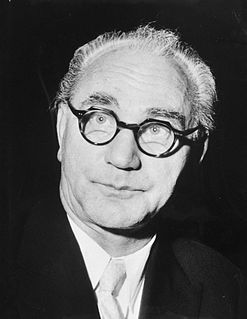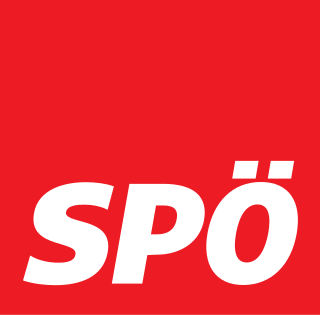
Franz Vranitzky is an Austrian politician. A member of the Social Democratic Party of Austria (SPÖ), he was Chancellor of Austria from 1986 to 1997.

Alfred "Fred" Sinowatz was an Austrian politician of the Social Democratic Party (SPÖ), who served as Chancellor of Austria from 1983 to 1986. Prior to becoming Chancellor, he had served as Minister of Education from 1971 to 1983 and Vice-Chancellor from 1981 to 1983.

Parliamentary elections were held in Austria on 3 October 1999.

Early parliamentary elections were held in Austria on 17 December 1995, after the Grand Coalition between the Social Democratic Party (SPÖ) and Austrian People's Party collapsed over disagreements about the budget. The SPÖ remained the largest party in the National Council and the Grand Coalition was reformed. Voter turnout was 86.0%.

Early parliamentary elections were held in Austria on 23 November 1986. They were called by Chancellor Franz Vranitzky of the Socialist Party (SPÖ), as he was not prepared to continue the coalition government with new Freedom Party leader Jörg Haider, who had ousted Norbert Steger at the party convention.

Parliamentary elections were held in Austria on 6 May 1979. The Socialist Party won a fourth term in government, taking 95 of the 183 seats. Voter turnout was 92.2%. As of the 2017 elections, this is the most seats that an Austrian party has won in a free election.

Parliamentary elections were held in Austria on 5 October 1975. The result was a victory for the Socialist Party, which won 93 of the 183 seats. Voter turnout was 92.9%.

Early parliamentary elections were held in Austria on 10 October 1971, following electoral reforms which increased the number of seats in the National Council from 165 to 183 and increased the proportionality of the seat distribution. The result was a victory for the Socialist Party, which won 93 of the 183 seats, an absolute majority. Voter turnout was 92.4%. Socialist leader Bruno Kreisky remained Chancellor.

Parliamentary elections were held in Austria on 1 March 1970. The result was a victory for the Socialist Party, which won 81 of the 165 seats to become the largest party for the first time in the Second Republic, only two seats short of a majority. Bruno Kreisky of the Social Democrats became Chancellor at the head of a minority government that was tolerated by the Freedom Party of Austria in return for electoral reform that favoured smaller parties. Voter turnout was 91.8%. It was the first Socialist-led government since 1920, and the first purely left-wing government in Austrian history.

Parliamentary elections were held in Austria on 6 March 1966. The result was a victory for the Austrian People's Party (ÖVP), which won 85 of the 165 seats. Voter turnout was 93.8%. With an outright majority of three seats, the ÖVP could govern alone. Nonetheless, ÖVP leader and Chancellor Josef Klaus initially sought to continue the grand coalition with the Social Democratic Party of Austria (SPÖ) that had governed since 1945. When talks for a renewed coalition failed, Klaus formed an exclusively ÖVP cabinet, the first one-party government of the Second Republic. It was also the first purely centre-right government in Austria since before World War II.

Parliamentary elections were held in Austria on 18 November 1962. The result was a victory for the Austrian People's Party, which won 81 of the 165 seats. Voter turnout was 93.8%. Although the People's Party had come up only two seats short of an outright majority, Chancellor Alfons Gorbach retained the grand coalition with the Socialists under Vice-Chancellor Bruno Pittermann.

Parliamentary elections were held in Austria on 10 May 1959. Although the Social Democratic Party received the most votes, the Austrian People's Party retained a bare one-seat plurality. The Communist Party of Austria lost its remaining three seats and has not returned to the National Council since. Voter turnout was 94.2%. The grand coalition that had governed the country since 1945 remained in office, with People's Party leader Julius Raab as Chancellor and Socialist leader Bruno Pittermann as Vice-Chancellor.

Parliamentary elections were held in Austria on 13 May 1956. The result was a victory for the Austrian People's Party, which won 82 of the 165 seats in the National Council. Voter turnout was 96.0%. Although the ÖVP had come up one seat short of an absolute majority, ÖVP leader and Chancellor Julius Raab retained the grand coalition with the Socialists, with the SPÖ leader Adolf Schärf as Vice-Chancellor.

Presidential elections were held in Austria on 4 May 1986 with a second round on 8 June 1986. Kurt Waldheim, former Secretary-General of the United Nations, endorsed by the Austrian People's Party was elected. Following Waldheim's victory, Chancellor Fred Sinowatz and other government members of the defeated Socialist Party stepped down, including the Minister of Foreign Affairs Leopold Gratz, who said he refused to "direct the Austrian foreign service in the defense of President Waldheim."

Presidential elections were held in Austria on 5 May 1957. There were only two candidates, with Adolf Schärf of the Socialist Party winning with 51.1% of the vote. Voter turnout was 97.2%.

Presidential elections were held in Austria on 28 April 1963. The result was a victory for incumbent President Adolf Schärf of the Socialist Party, who received 55.4% of the vote. Voter turnout was 95.6%.

Presidential elections were held in Austria on 23 May 1965, following the death of incumbent President Adolf Schärf on 28 February. The result was a victory for Franz Jonas of the Socialist Party, who received 50.7% of the vote. Voter turnout was 96.0%.

Presidential elections were held in Austria on 25 April 1971. The result was a victory for incumbent President Franz Jonas of the Socialist Party, who received 52.8% of the vote. Voter turnout was 95.3%.
Since its foundation in 1889, the Social Democratic Party has often been one of the main political forces in Austria. At the start of the First World War it was the strongest party in parliament, and on the ending of that war in 1918 the party leader Karl Renner became chancellor of the First Republic. The party lost power in 1920, but retained a strong base of support in the capital Vienna. A period of rising political violence culminated in the banning of the Social Democratic Party under the Austrofascist dictatorship (1934–38).
















